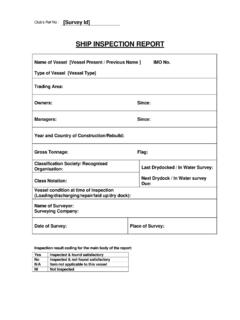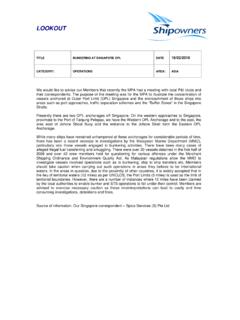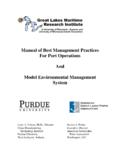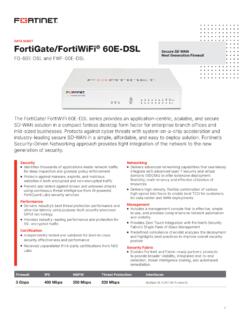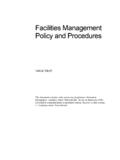Transcription of Tugs and Tows - A Practical Safety and Operations Guide
1 LOSS PREVENTIONTugs and Tows A Practical Safety and Operational Guide British Crown Copyright and/or database rights. Reproduced by permission of the Controller of Her Majesty s Stationery Office and the UK Hydrographic Office ( ).The information and recommendations in this booklet are given in good faith and are meant to highlight best practices , good seamanship and common sense to reduce incidents that result in related claims. However, Members must take into consideration the guidance and regulatory requirements given by flag states and other governing authorities when formulating policy in line with the contents of this TO BE USED FOR and Tows A Practical Safety and Operational Guide I 1 The Shipowners Club provides P&I insurance for smaller and specialised vessels around the world, including those that engage in towage Operations on a daily basis.
2 It is while involved in this activity that incidents resulting in damage, injury or even death may occur. After an analysis of the claims notified to the Club over a two year period it was observed that 53% of all towage related claims were due to primary cause, human factor , with the initial claim being attributable to poor maintenance, crew negligence, sub-standard navigation, as well as inadequate operational and Safety procedures. It is hoped, therefore, that training will assist in the avoidance or reduction of these booklet has been produced to assist in raising awareness of some of the Practical aspects of a towage operation with a view to assisting mariners who may not be fully familiar with these processes. Foreword2 I Tug and Tows A Practical Safety and Operational Guide Introduction 5 Scope 6 Chapter 1 P&I Cover Applicable to this Operation 7 Customary and non-customary towage 7 Towing surveys 8 Chapter 2 Different Tug Types 9 Conventional tugs 9 Azimuth stern drive tugs (ASD)
3 10 Tractor tugs 10 The Rotor tug 11 Chapter 3 Responsibilities 12 Chapter 4 Manning and Training 13 Chapter 5 Safety Management 14 Chapter 6 Planning 15 Tow plan 15 Preparations on board the tug 16 Checks on board the towed vessel or barge 17 Planning for rough water 18 Passage planning and bridge equipment 19 Navigation 20 Emergency planning 21 Chapter 7 Stability 22 Forces during towing in a horizontal plane 23 Forces during towing in a vertical plane 24GZ stability lever 26 Stability of towed unit 29 ContentsTug and Tows A Practical Safety and Operational Guide I 3 Chapter 8 Towing Operations 30 Bollard pull (BP) 30BP calculation 31 Pivot point 32 Position of tug and interaction 33 Girting, girding or tripping (GGT) 36 Gob/Gog wire or rope 40 Emergency quick release systems for towline 42 The effect of wind 42 The effect of current 42 Other concerns effecting manoeuvrability 46 Length of towing line 46 Shortening the length of the tow 47 Establishing the tow connection 47 Position of barges 48 Towing alongside 49 Pushing ahead 50 Double tows and tandem tows 51 Single wire under rider tows 53 Two wire tows 54 During the tow 54 Inspections during the towage 55 Chapter 9 Loss of Tow Wire 56 Emergency towline rigging 574 I Tug and Tows A Practical Safety and Operational GuideChapter 10 Towing Equipment 60 General 60 Planned maintenance system (PMS)
4 60 Testing and certificates 62 Towing winch 62 Towing hook 64 Bollards, fairleads and sheaves 64 Towlines, wire and synthetic ropes 64 Shackles 66 Towing bridle 67 Ancillary equipment 68 Navigation lights and shapes 68 Safety factors 69 Strength of towline and towline connections (outside ice areas) 69 Chapter 11 Personnel Injury Risk 70 Chapter 12 Communication 72 Chapter 13 Record Keeping 73 Chapter 14 Other Risks Piracy 74 Annex 1: Case Studies 75 Annex 2 Acknowledgements and References 83 Tug and Tows A Practical Safety and Operational Guide I 5 This booklet has been produced by the Club in response to the increasing number of claims and incidents arising from towage Operations which have resulted in injuries, groundings, collisions, pollution, property damage and loss of 20th February 2011 to 20th February 2013 all claims incidents notified to the Club were analysed for primary cause.
5 Throughout the booklet we have included cases that were highlighted in this study with the aim to share the Club s experiences so that other Members may prevent a similar event from tug and barge Safety regulations focus on hardware and yet experience shows that a good Safety record depends upon the Safety culture of the entire company. The hardware issues are important, including the proper maintenance and inspection of equipment, but managing the human factor successfully would also lessen the number of Guide is drawn from the accumulation of experience within the Club and from industry sources including IMO MSC/Circ 8841 (Guidelines for Safe Ocean Towage). It highlights good towing practices and illustrates learning points from reported incidents. It is general in nature and is not intended to replace regulatory requirement, specific company procedures and guidelines, or what is learnt from simulator training and is intended to assist crews to perform a safe towing operation.
6 1 For the purposes of this manual we use the definitions noted in the IMO Introduction6 I Tug and Tows A Practical Safety and Operational GuideThe work that tugs and tow boats carry out is inherently risky. However, the risks can be managed and reduced with proper care and good book is aimed at small tugs and work boats involved in towing and work boat Operations which may not be required to be fully regulated. These tugs2 may legitimately be less regulated, because of size, jurisdiction or operating area. The risks in their Operations are similar to and in many cases exceed those of the more internationally regulated booklet does not address the working practices of pusher type tugs or integrated tug and barge units in detail. In addition, offshore, ocean towing or salvage industry Operations and harbour tugs working in ports and terminals are not covered as it is likely they are governed by the IMO, flag states or by the port Club s towage claim statistics show that some 53% of incidents are caused directly by human error and 12% by inadequate navigational procedures.
7 Whether the incident was caused by crew negligence, poor maintenance, poor navigation, inadequate operational/ Safety procedures, lack of knowledge or training, it is clear that if the human factor is addressed, incidents will decrease Where a reference is made to tugs this also includes workboats where applicable. ScopeTug and Tows A Practical Safety and Operational Guide I 7 Traditional P&I cover includes; collision claims, damage to third party property, injury or death to the crew, liability to passengers or cargo, liability for wreck removal and certain fines and , the liabilities covered when towing are often misunderstood and covered by three principal sub-sections to the Towage Rule. Customary towage of an insured vessel. Non-customary towage of an insured vessel. Towage by an insured masters should be aware that generally insurance cover provided by the P&I club traditionally excludes any loss including wreck removal or damage to the towed object and its cargo or property thereon.
8 If the tug is not towing under an approved contract the Club may be able to provide cover for liabilities for loss of, damage to or wreck removal of the tow or cargo by special is within the Rules of the Club that as a third party liability insurer it requires notification when a non-customary towage is to be embarked upon. This is to ensure that certain aspects of the tow are checked and confirmed by an independent surveyor, providing the assurance that risks have been minimised. This will include the plan for a non-customary tow. When a customary towage operation is scheduled it is expected that appropriate planning steps have been taken by the and non-customary towageThe Club Rules lay out its liabilities for customary and non-customary towage. The Rules should be referred to or the Club contacted if in any doubt about insurance cover for a towage towage of an insured vessel refers to the liabilities arising under the terms of a contract for the purpose of entering/leaving port or manoeuvring within a port during the ordinary course of trading.
9 It can refer to towage of an insured vessel as habitually towed in the ordinary course of trading from port to port or place to place. Chapter 1 P&I Cover Applicable to this Operation8 I Tug and Tows A Practical Safety and Operational GuideNon-customary towage is all towage which is not customary. Liabilities arising from a non-customary towage under the terms of a contract for towage of an insured vessel other than the customary towage mean any other towage arrangement; so long as the cover has been agreed by the Club in writing. Therefore, if the towage to be undertaken is an unusual operation which the Club is unaware of, prior agreement needs to be sought from the Club to ensure continued insurance cover. The Club, on receipt of this information, may require that a fitness to tow survey is carried out by an approved surveyor so that all risks are surveysDifferent insurers will require an insurance towing survey, sometimes called a Towing Warranty survey or Fitness to Tow.
10 These must be carried out by an experienced and independent surveyor. The scope of the survey will depend on the nature of the towing operation and often it may be combined with a Hull & Machinery (H&M) or the cargo insurer s survey. The survey is to establish if the towage arrangements for the tow, including the towing vessel or tug/s, the towed unit/s and cargo are fit for the intended voyage. This includes: Satisfactory condition of the tug, barge and cargo stowage. Confirmation that the tug is manned with appropriate crew. Ensuring sufficient bollard pull and tug power to complete the operation. Satisfactory condition of the towing arrangements, equipment, gear and emergency arrangements. Satisfactory evaluation of the stability of tug and tow and lashing arrangements of any cargo on the towed vessel.
